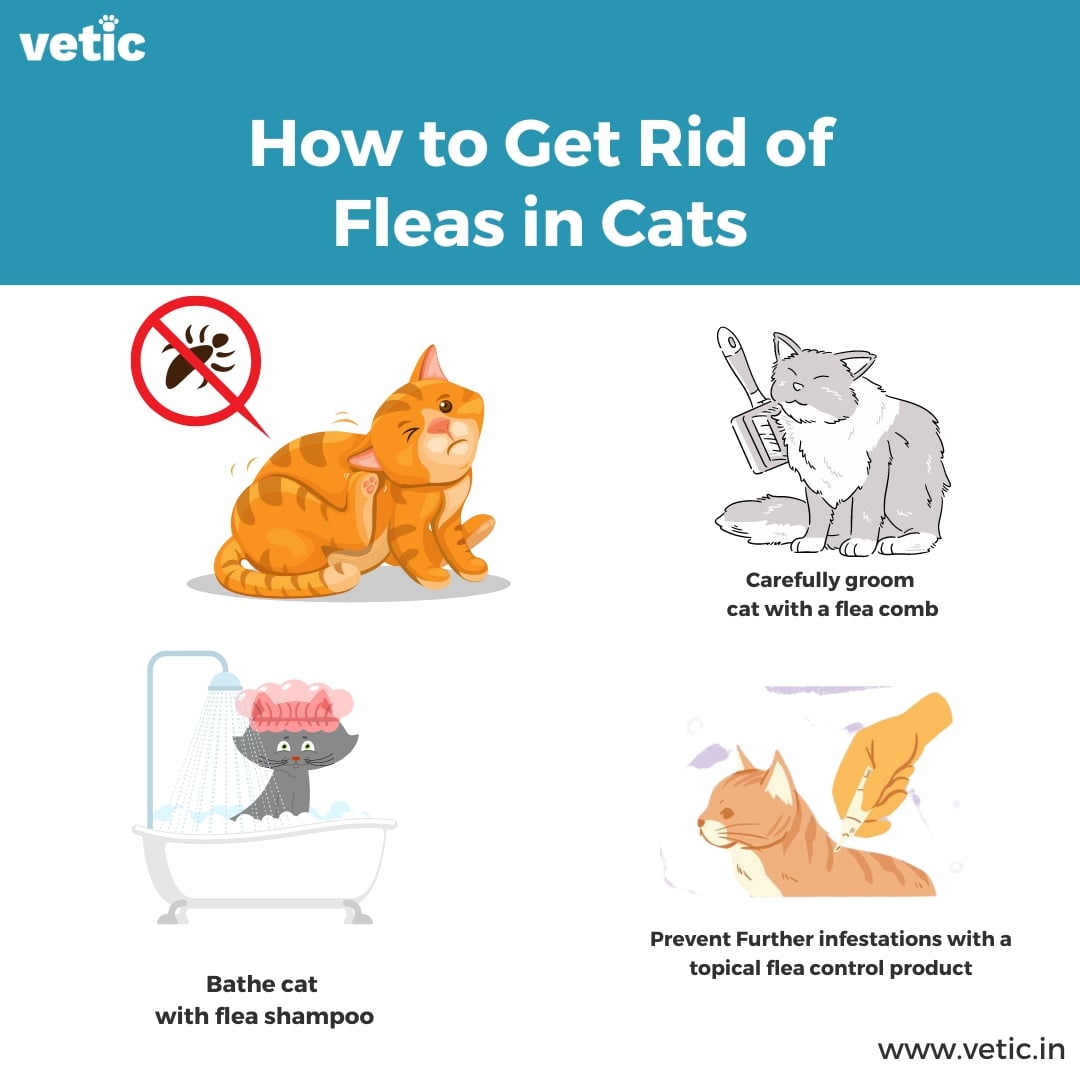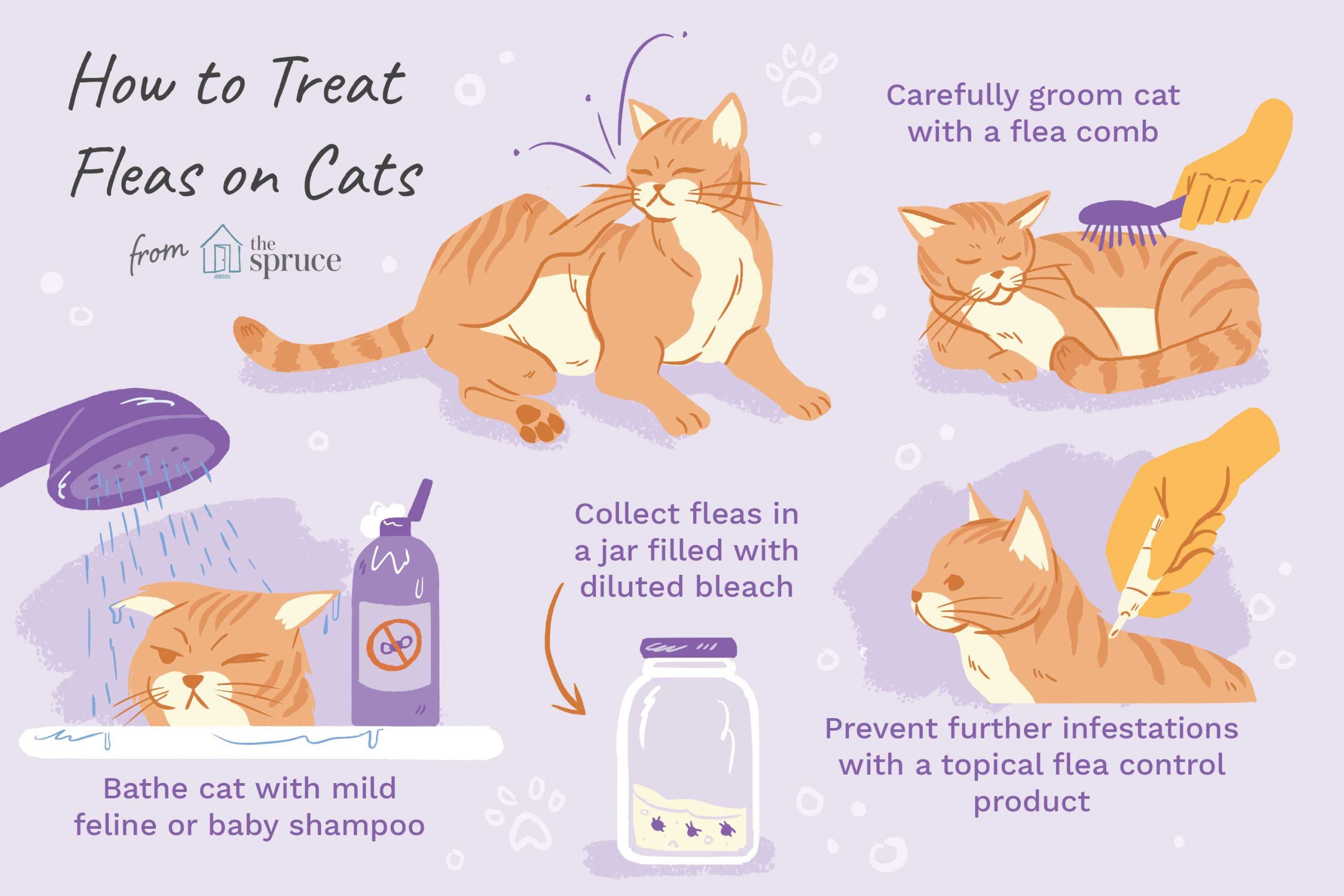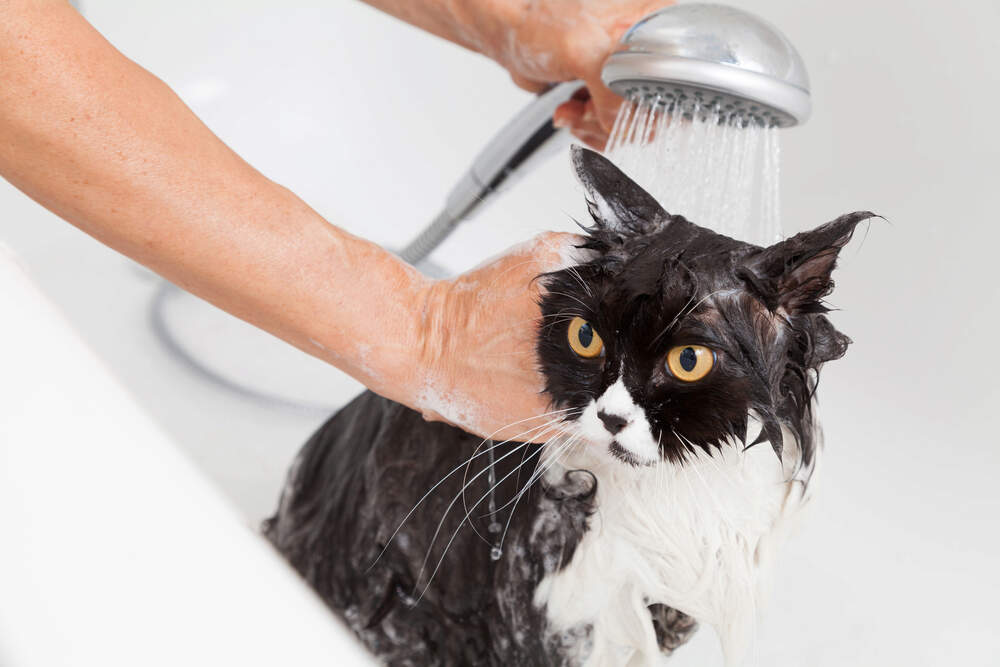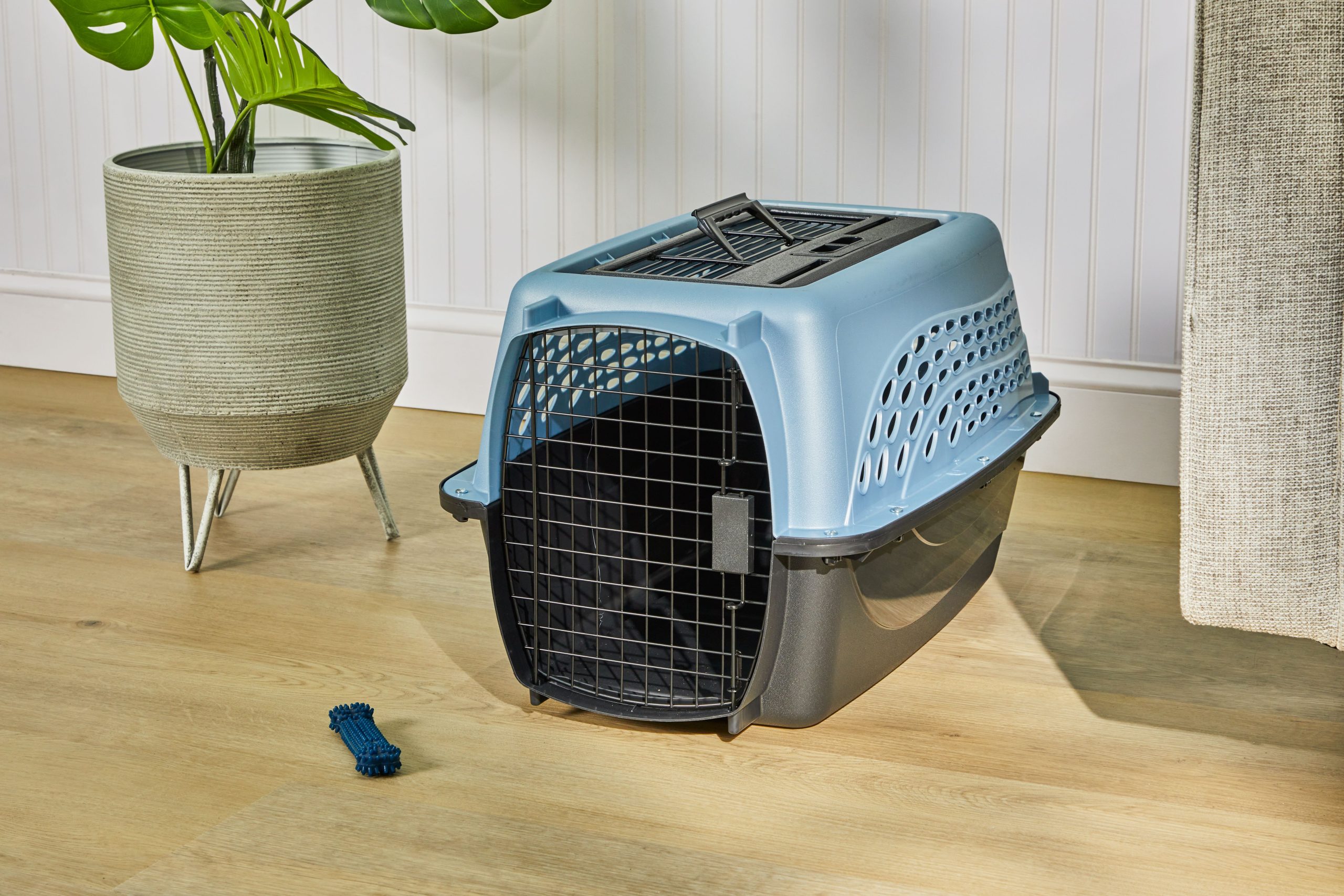How to Get Rid of Fleas on Cats Without Bathing: Quick Tips

How to Get Rid of Fleas on Cats Without Bathing: Fleas can be a big problem for cats. These tiny pests cause discomfort and can lead to health issues.
Many pet owners think bathing is the only way to get rid of fleas. But there are effective methods to eliminate fleas without a bath. This blog will guide you through simple and safe ways to remove fleas from your cat.
You will learn about various treatments, natural remedies, and preventive measures. These methods can help keep your cat comfortable and flea-free. Plus, you will discover tips to create a flea-free environment at home. Say goodbye to the hassle of baths and hello to easier solutions for your furry friend. Keep reading to find out how!
The Flea Menace For Felines
The flea life cycle has four stages: egg, larva, pupa, and adult. Fleas start as tiny eggs. They fall off the cat and hatch into larvae. Larvae live in dark places. They eat dirt and flea faeces. After some time, they turn into pupae. This stage can last for weeks. Finally, they become adult fleas.
Adult fleas can bite cats. This can cause itching and discomfort. Some cats can have allergic reactions. This may lead to skin infections. Fleas can also spread tapeworms. These are harmful to your cat’s health. Keeping your cat flea-free is very important.
Recognizing A Flea Infestation
Fleas can cause many problems for your cat. Look for these signs to know if your cat has fleas:
- Frequent scratching or biting at their skin.
- Red or irritated skin in some areas.
- Small black dots, known as flea dirt, on their fur.
- Visible fleas jumping on their body or in their fur.
- Restlessness or anxiety in your cat.
Check your cat regularly. Pay close attention to their neck and tail area. Fleas often hide there. Early detection helps stop the problem from getting worse.
Alternatives To Bathing
Spot-on treatments are easy to use. They come in small tubes. Just apply them to your cat’s skin. Make sure to follow the instructions. These treatments kill fleas quickly. They also prevent new fleas from coming.
Oral medications are another option. These come in pill form. You give them to your cat once a month. They work from the inside out. This means they kill fleas quickly too.
Both methods are effective. They are safe and simple. Choose what works best for you and your cat.
Environmental Control
Keeping your home clean helps get rid of fleas. Start by vacuuming carpets, rugs, and furniture. Focus on areas where your cat likes to rest. Empty the vacuum bag or canister outside immediately. This prevents fleas from coming back.
Wash your cat’s bedding and any soft toys often. Use hot water to kill fleas and their eggs. Mop hard floors with a solution to remove any remaining pests.
Consider using natural predators like nematodes. These tiny worms eat flea larvae. You can also use essential oils like lavender or cedarwood. They may help keep fleas away.
Diatomaceous earth is another good option. Sprinkle it in your home. It helps kill fleas without chemicals. Just be careful not to use too much.
Manual Removal Techniques
Using a flea comb is a great method. Run the comb through your cat’s fur. Focus on the neck and tail areas. Remove any fleas you find. Dip the comb in soapy water to kill fleas. Repeat this every few days.
Flea traps can help catch fleas. Place them where your cat sleeps. Use a bowl of soapy water and a light. Fleas jump towards the light and fall in. This will help reduce the flea population.
Flea collars are also useful. They release chemicals that kill fleas. Make sure the collar fits snugly but not too tight. Check your cat often to ensure it’s safe. Replace the collar as needed.

How to Get Rid of Fleas on Cats Without Bathing
Credit: www.thesprucepets.com
Natural Remedies
Diatomaceous earth is a natural powder. It helps kill fleas. Sprinkle it on your cat’s fur. Be careful not to use too much. Let it sit for a few hours. Then, brush it out. This method is safe and effective.
Essential oils can also help. Oils like lavender and peppermint work well. Mix a few drops with carrier oil. Apply it to your cat’s collar or bedding. Always check for allergies first. Use oils sparingly and avoid direct application on skin.
Preventative Measures
Regular grooming helps keep fleas away. Brush your cat often. Use a fine-toothed comb. This removes fleas and eggs easily.
Check your cat for fleas. Pay attention to the neck and tail area. Fleas love to hide there.
Flea-proofing your home is also important. Vacuum your home often. This removes flea eggs and larvae.
Wash your cat’s bedding weekly. Hot water kills fleas and their eggs. Consider using flea traps around your home.
Seal gaps and cracks in your home. This stops fleas from entering. Regular cleaning makes a big difference.

How to Get Rid of Fleas on Cats Without Bathing Fleas can be a big problem for cats. These tiny pests cause discomfort and can lead to health
Credit: vetic.in
Professional Help And Advice
Seeing a vet is important for your cat’s health. Fleas can cause serious issues. Signs include scratching, biting, or hair loss. Seek help if you notice these signs.
Consulting a pest control expert can also help. They know how to safely remove fleas from your home. Make sure they use pet-friendly methods.
Always ask for advice from professionals. Trust their experience. They can guide you on the best treatments. Your cat’s comfort is very important.

How to Get Rid of Fleas on Cats Without Bathing
Credit: www.adamspetcare.com
Frequently Asked Questions
How Can I Treat Fleas on My Cat Naturally?
You can treat fleas on your cat naturally using essential oils, diatomaceous earth, and flea-repellent herbs. Always dilute essential oils before applying them to your cat. Additionally, regularly vacuuming your home and washing your cat’s bedding can help eliminate flea eggs and larvae.
What Are The Best Flea Prevention Methods For Cats?
The best flea prevention methods include using topical treatments, oral medications, and flea collars. Regular grooming with a fine-toothed comb can also help catch fleas early. Ensure your home is treated with flea sprays and keep your cat indoors to reduce exposure to fleas.
Are flea collars safe for cats?
Flea collars can be safe for cats if used correctly. Look for collars specifically designed for cats and follow the manufacturer’s instructions. Monitor your cat for any adverse reactions. If your cat shows signs of irritation, remove the collar immediately and consult your veterinarian.
How Often Should I Check My Cat For Fleas?
You should check your cat for fleas at least once a week. Regular checks help detect fleas early before they multiply. Pay special attention to areas like the neck, behind the ears, and under the legs where fleas often hide.
Conclusion
How to Get Rid of Fleas on Cats Without Bathing: Getting rid of fleas on cats without bathing is possible. Focus on using safe treatments like sprays and powders. Regularly vacuum your home to eliminate fleas and their eggs. Wash your cat’s bedding often to keep them flea-free. Treat your home and yard to stop fleas from returning.
With patience and the right methods, you can help your cat feel comfortable again. Taking these steps will ensure a happy, flea-free life for your furry friend. Keep your cat healthy and enjoy your time together.







[…] Cat fleas must be treated for the sake of their health. Fleas can spread swiftly and penetrate your home, making it vital to act fast. Your cats can avoid discomfort and aggravation by knowing how to properly treat fleas. There are numerous choices, ranging from collars and environmental sprays to topical treatments. […]